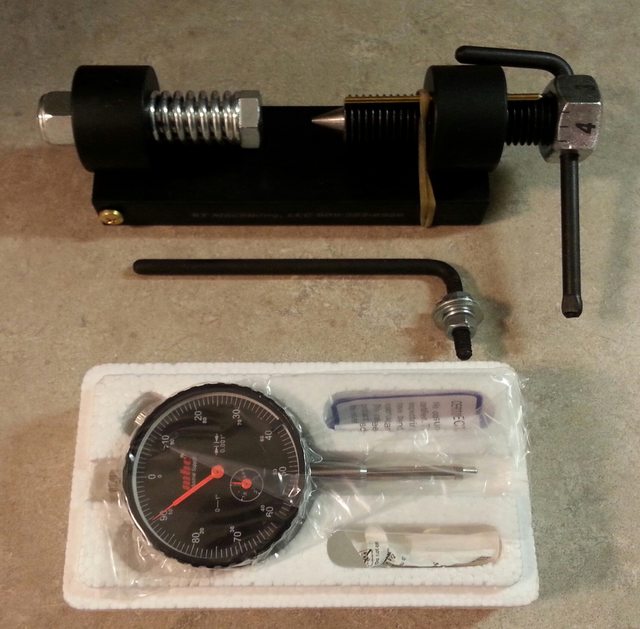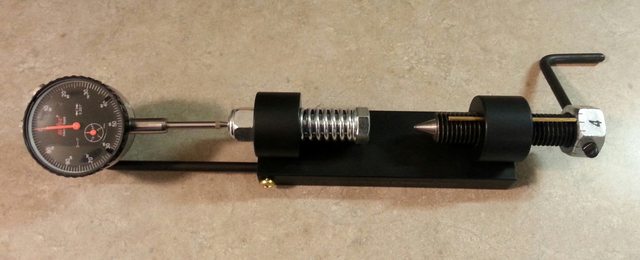Greetings. For years my thumbnail has been my lead tester. Different threads here made me wonder if this was good enough, so I thought, I need a lead tester, but I'm not interested in paying $80-$600 for a tester. Well, I made one set up under the idea that a sharp point would penetrate further into pure lead then it does into mixed lead. Using a dial indicator and they idea that if the point pushed in further I would have a lower number. It seems to work. A Hornaday 45 caliber round ball tested .070 while printer's lead tested .090. Wheel weights test between .078 and .081. If I can figure out how to attach a picture on this site I will do so, otherwise somebody tell me how I will sure send a couple of pictures. I had a good friend make one small part on a lathe, otherwise it's strictly off-the-wall.
Squint.
Squint.








